165 UMMA Objects
165 UMMA Objects

Korean (Korean (culture or style))
Tea Bowl, 'ido chawan' type
16th century
Bequest of Margaret Watson Parker
1954/1.535
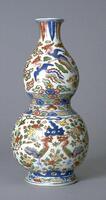
Chinese (Chinese (culture or style))
Double-Gourd Wall Vase
1573 – 1620
Gift of Marian Doering in memory of Paul M. Doering
1979/2.12
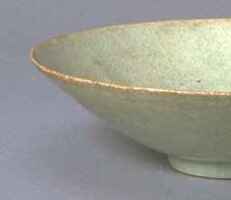
Chinese (Chinese (culture or style))
Bowl
960 – 1127
Gift of Mrs. Henry Jewett Greene for The Mr. and Mrs. Henry Jewett Greene Memorial Collection
1971/2.83

Chinese (Chinese (culture or style))
Bowl
1368 – 1644
Gift of Mr. Jennis R. Galloway through the Friends of the Museum of Art
1972/1.155

Chinese (Chinese (culture or style))
Bowl
1000 – 1132
Gift of Mrs. Caroline I. Plumer for the James Marshall Plumer Collection
1973/2.14

Chinese (Chinese (culture or style))
Bowl
1573 – 1619
Museum purchase made possible by the Augusta Plumer Weiss Memorial Fund
1977/2.19
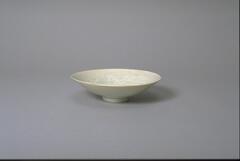
Chinese (Chinese (culture or style))
Bowl
960 – 1279
Museum purchase for the James Marshall Plumer Memorial Collection
1964/2.74
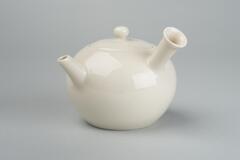
Seifū Yohei III
White teapot with stamped dragonfly design (pair w/ 1954/1.503)
1893 – 1914
Bequest of Margaret Watson Parker
1954/1.512
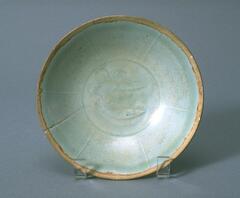
Chinese (Chinese (culture or style))
Bowl
12th century
Gift of Willard A. and Marybelle Bouchard Hanna
1991/2.15
![It has a small straight rim. Abstract flowers is decorated on the shoulder in the cobalt blue. The body shapes octagonal form.<br />
<br />
This white porcelain jar has an octagonal body and is decorated with vignettes in underglaze cobalt blue on the upper part of the shoulder. Its recessed base, created by removing clay from the bottom, retains traces of fine sand support. This angular bottle was shaped using a mold and has a strong sheen. A large number of cracks and contaminants, however, have darkened the surface. The clay is well sintered, forming a sturdy body.<br />
[Korean Collection, University of Michigan Museum of Art (2014) p.175] It has a small straight rim. Abstract flowers is decorated on the shoulder in the cobalt blue. The body shapes octagonal form.<br />
<br />
This white porcelain jar has an octagonal body and is decorated with vignettes in underglaze cobalt blue on the upper part of the shoulder. Its recessed base, created by removing clay from the bottom, retains traces of fine sand support. This angular bottle was shaped using a mold and has a strong sheen. A large number of cracks and contaminants, however, have darkened the surface. The clay is well sintered, forming a sturdy body.<br />
[Korean Collection, University of Michigan Museum of Art (2014) p.175]](/media/W1siZiIsIjIwMjIvMDUvMjUvNWRldWpibGR1MF9kZWZhdWx0LmpwZyJdLFsicCIsInRodW1iIiwiMjQweDIwMCJdXQ?sha=1263f52c62ec2d4b)
Korean (Korean (culture or style))
Small faceted bottle
1850 – 1899
Gift of Mrs. Caroline I. Plumer for the James Marshall Plumer Collection
1977/1.196
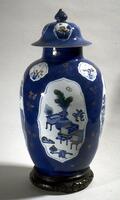
Chinese (Chinese (culture or style))
Covered Jar (Jar)
1700 – 1722
Gift of the Estate of Hobart Taylor, Jr.
1982/1.206A
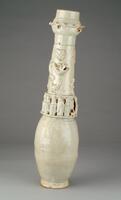
Chinese (Chinese (culture or style))
Covered Jar
12th century
Gift of Mark and Iuliana Phillips
1996/2.44
Loading…
